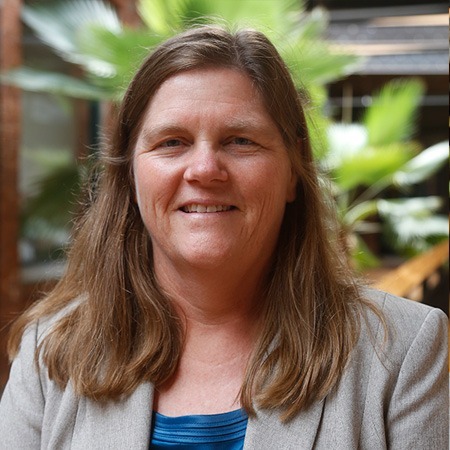Celebrating 50 years of cleaner air; looking forward to 50 more
By Ruth Albright (Posted December 8, 2019):

This photo, taken near Grandfather Mountain, captures the ability to see buildings in Charlotte, North Carolina, from a point almost 80 miles away. (Photo used with permission.)
I have been elected to serve on the Board of the Carolinas Air Pollution Control Association (CAPCA). I look forward to serving the organization in this capacity because I believe in CAPCA’s mission. The excerpt below, from the Constitution and Articles of Association of CAPCA, states the purposes for which the association is organized:
To organize and bring together into a unified body and association those individuals and entities who are working in the field of clean air management, whether in government, individual, corporate, or association capacity and those individuals and other entities that are interested in clean air, for the purpose of providing educational resources and opportunities in the area of air pollution control and related matters for promoting, encouraging, improving, advancing, and strengthening the cause of clean air through any and all lawful avenues and opportunities available.
CAPCA celebrated its 50th anniversary in 2019. It is no coincidence that CAPCA was organized in 1969, which was during the formative period for the National Environmental Policy Act and the Clean Air Act of 1970. There were numerous reports of detrimental air quality events in the United States, and individual states were taking up the public policy challenge of providing clean air to their citizens in the 1960s. Organizing the state and local government regulators and providing a forum for the regulated community to have an open dialog with the regulators were key steps to improve air quality. Regionally, both North Carolina and South Carolina were experiencing growth in the industrial sectors of the economy. As new industries moved in, the challenges to maintain clean air were becoming evident.
States have a public policy goal of ensuring that citizens have clean air to breathe because states are charged with providing for public health and welfare. Air quality that is detrimental to good health affects the economic success of a community and strains public health systems.
The tools available to states for affecting air quality are regulatory in nature. Regulations may be written to be proscriptive; they can prohibit specific actions or impacts. Regulations may be written to be prescriptive; they can require specific actions or impacts. Regulations may be written to be permissive; they can allow actions or impacts. Because regulations have an economic impact on the business environment, forming an organization specifically to promote discussion of how to regulate air quality was a positive development for responsive regulation development.
CAPCA encourages positive public policy outcomes specifically because it provides a forum for the industries that generate air pollution to have a dialog with regulators and those who implement air quality regulations. By discussing the desired goal, clean air and competitive industry, the regulators can develop regulations that are restrictive enough to provide clean air and are also flexible enough for industry to successfully compete in the world economy.
CAPCA also provides a forum to develop relationships within the regulated community. Those relationships facilitate the willingness to listen to the diverse views of the various stakeholders and develop common goals. This makes the regulated community more willing to take on the regulatory burden imposed by regulations because they have input into the specifics of the requirements. This helps the regulatory community understand what can and cannot be accomplished through regulations.
The year 2019 marks almost 50 years of improvements in air quality in the United States. During this time:
- Gross Domestic Product (GDP), a measure of economic activity, has grown by 324 percent.
- The population of the United States has grown from 205 million to 327 million, an increase of 60 percent.
- Vehicles miles traveled has increased 275 percent.
- Emissions of the six criteria pollutants have declined an average of 73 percent.
The picture to the right shows the improvement in visual field from a point near Grandfather Mountain on October 24, 2019. The photo captures the ability to see buildings in Charlotte, North Carolina, from a point almost 80 miles away. Reductions in fine particulate, oxides of nitrogen, and sulfur dioxide have improved the air clarity. Throughout the country, improvements in air quality are increasing the air clarity.
As we look to the future, CAPCA will continue to serve the community of people interested in clean air both inside and outside of the Carolinas. These issues will evolve as the economy changes and new industries enter the market. There will continue to be a public policy associated with providing clean air, and bringing people with diverse opinions and insights will continue to be key in providing for a healthy future.
SynTerra employees have experience in air quality-related consulting services ranging from preparation of minor source air permits to development of compliance plans for Title V major source facilities. We can assist with:
- Preparation of air emission inventories to assess the quantity of various air pollutants emitted by a process
- Development of construction permit applications
- Modeling of proposed emissions for off-site impacts
- Development of operating permit applications for both new and renewal permits
- Assistance with development of compliance plans
- Assistance with source test plan development and execution
Related blog article: Albright elected as director of air pollution control organization.





